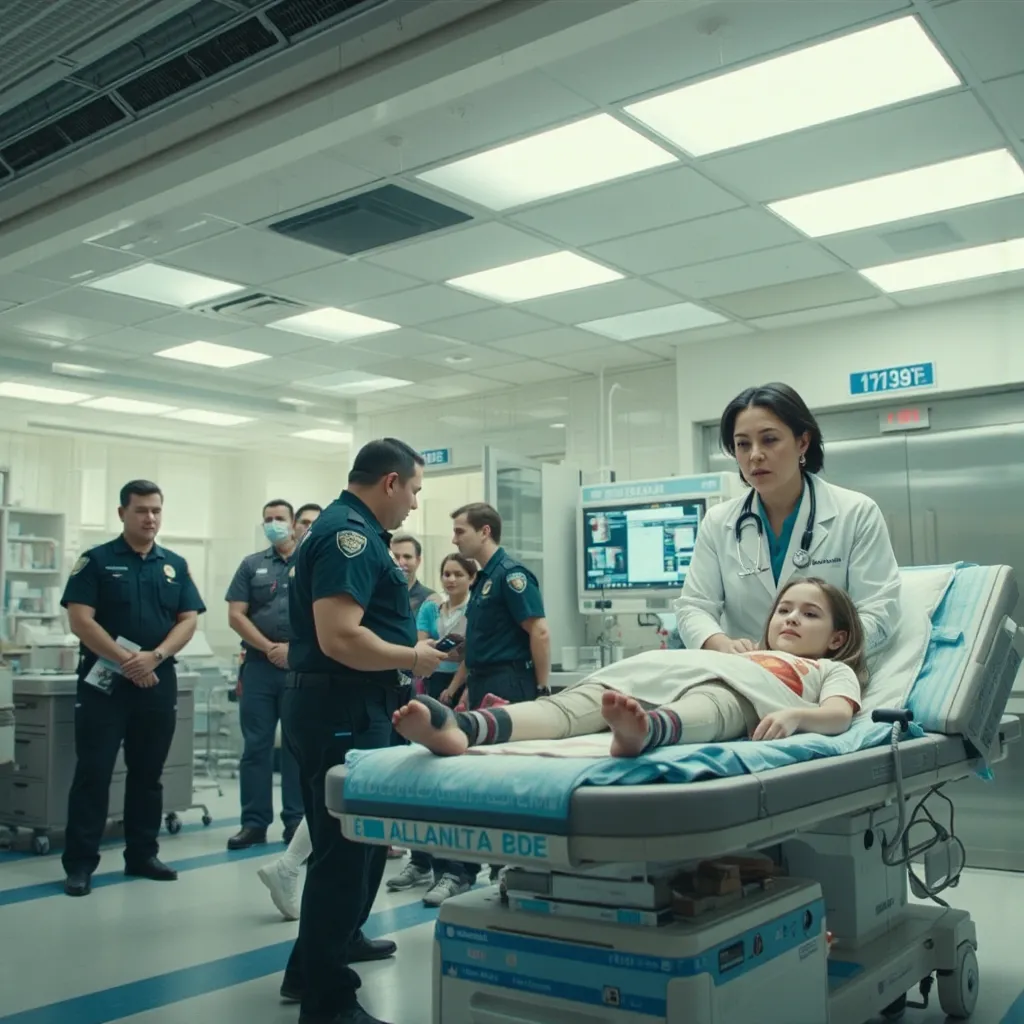At the AtlantiCare Regional Medical Center, Atlantic City Campus in AC NJ, another morning in the ER was busy, doctors were wating on a arrivial from Pleasantville where a 7 year old girl was being brought in after she collasped at school
The ER doors at AtlantiCare Regional Medical Center swung open, revealing paramedics rushing in with a small figure on a gurney. A 7-year-old girl, pale and unresponsive, was quickly surrounded by doctors and nurses. The team worked swiftly, hooking her up to monitors and starting an IV. The lead physician, Dr. Ramirez, a seasoned ER veteran with a calm demeanor, began barking out orders, “Check her vitals, get a blood panel, and page pediatric cardiology.” The air crackled with urgency as they fought to stabilize the young patient.
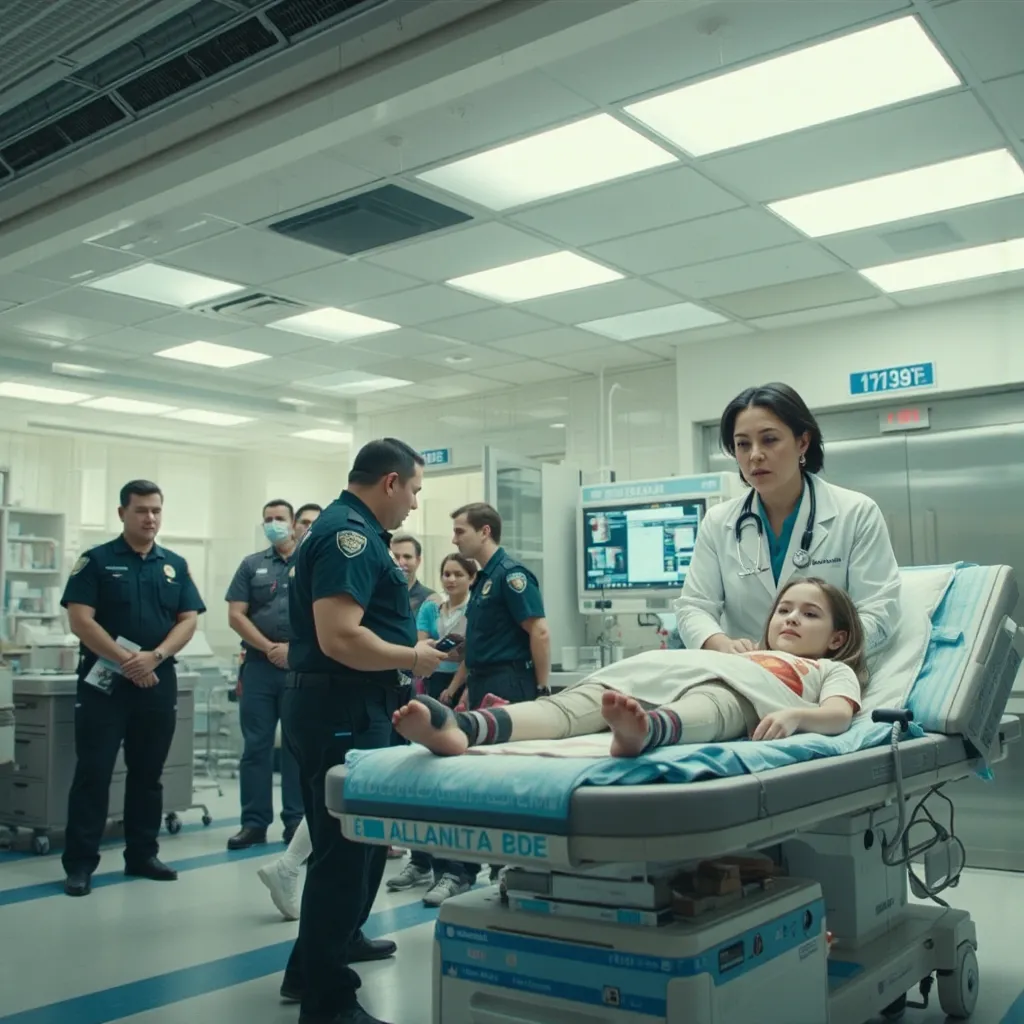
The girl had a very high fever and burning up
“Her temperature is spiking, 104.5!” a nurse called out, concern etched on her face. Dr. Ramirez immediately ordered a cooling blanket and medication to bring the fever down. “Any known allergies? Any recent illnesses?” she asked the paramedics, her voice sharp but controlled. They relayed the information they had: the girl, Lily, had seemed fine this morning, ate breakfast, and went to school. There was no known history of seizures or heart problems. The team worked tirelessly, their movements a well-rehearsed dance of expertise and precision, trying to piece together the puzzle of Lily’s sudden collapse.
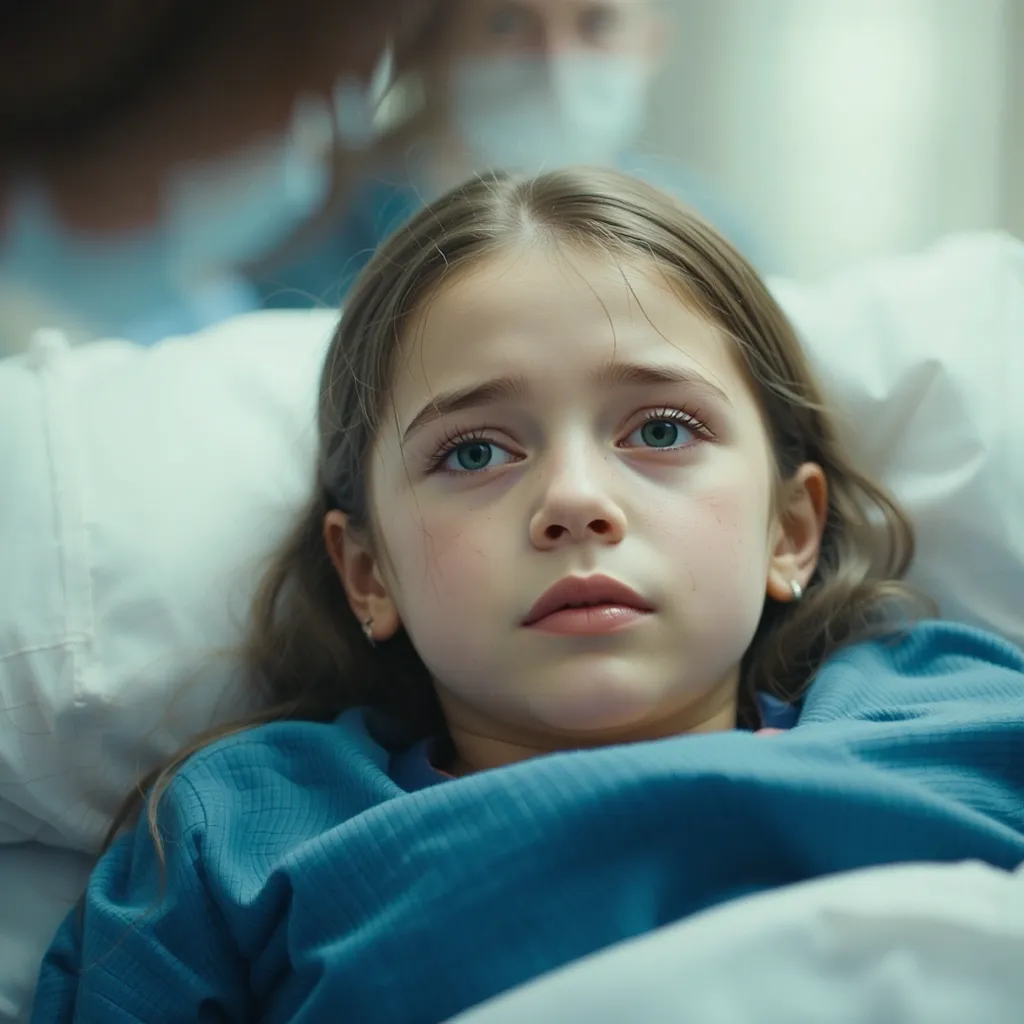
The girl who was wearing a white sweater and pink and white plaid skirt began to throw up badly
The monitors beeped erratically as Lily suddenly began to vomit violently. The contents were mostly clear liquid, but a tinge of red alarmed the medical team. “Suction! Get suction!” Dr. Ramirez yelled, quickly maneuvering to clear Lily’s airway. The nurse swiftly inserted a suction tube, removing the vomit and preventing aspiration. Lily’s small frame convulsed as she continued to heave, her white sweater and pink and white plaid skirt now stained. The urgency in the room intensified as the team fought to regain control of the situation. “What’s the blood panel showing?” Dr. Ramirez demanded, her eyes focused intently on Lily’s pale face.

Soon it was learned she had the bird flu and need to be taken to the ICU
The lab results came back, confirming the doctors’ worst fears. “Bird flu,” Dr. Ramirez announced grimly. “She needs to be transferred to the ICU immediately. We need to start her on antivirals and respiratory support right away.” The news hung heavy in the air, the implications of a highly contagious and potentially deadly virus clear to everyone in the room. The team worked quickly and efficiently to prepare Lily for transport, carefully monitoring her vital signs and ensuring she was stable enough for the move. As they wheeled her out of the ER, Dr. Ramirez felt a pang of concern. The battle was far from over, and Lily’s young life hung in the balance.
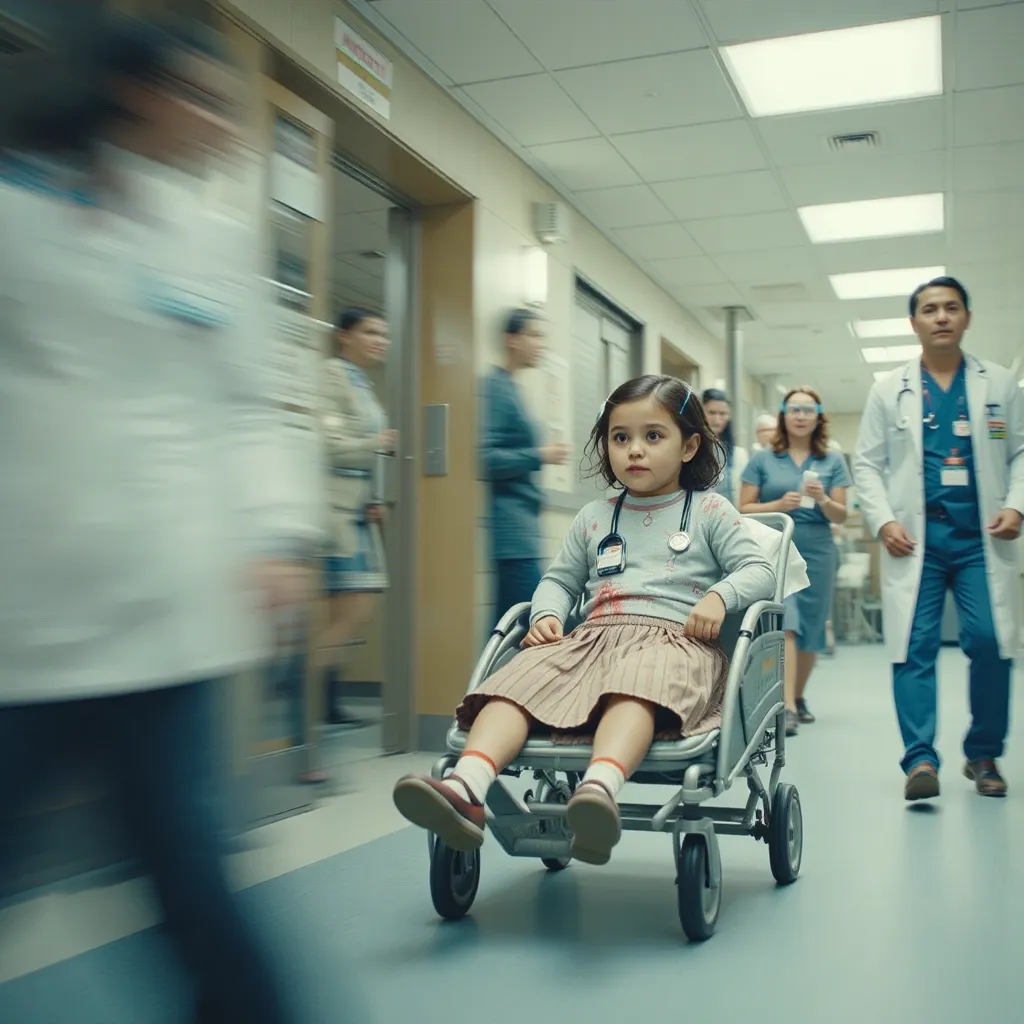
Pleasantville Police and the CDC were called to the Leeds Ave Elementary School where she went to, more students were sick there
News of Lily’s diagnosis spread quickly, triggering a flurry of activity both at the hospital and at Leeds Ave Elementary School in Pleasantville. AtlantiCare immediately implemented strict isolation protocols to prevent further spread within the facility. Meanwhile, the Pleasantville Police Department and the Centers for Disease Control (CDC) were alerted and dispatched to the school. Upon arrival, they found a scene of growing panic. Several other students were exhibiting similar symptoms – high fevers, vomiting, and respiratory distress. The school was quickly shut down, and a team of CDC personnel, clad in protective gear, began the process of identifying and isolating potentially infected individuals. The situation was rapidly escalating into a full-blown public health crisis.
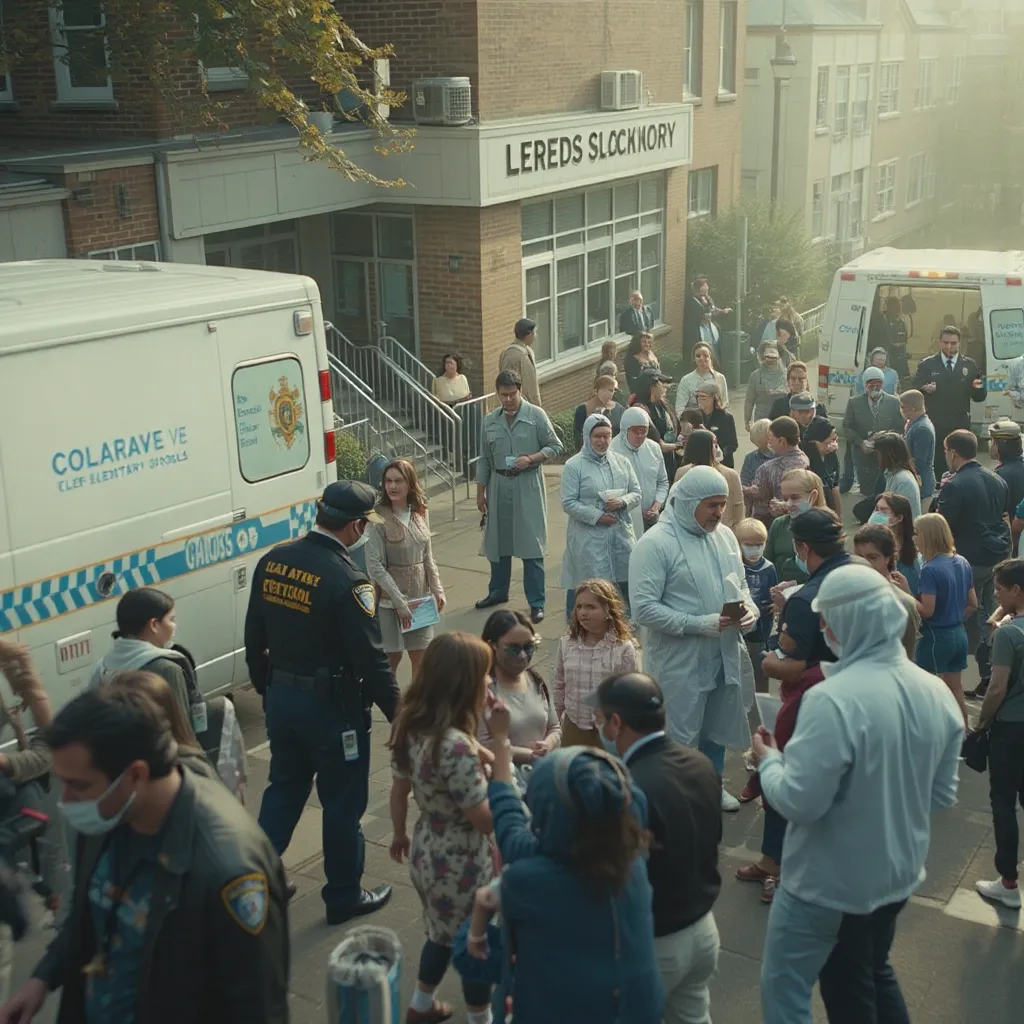
Soon several students were brought to AC and taken to the ICU
The ambulances screamed through the streets of Atlantic City, sirens cutting through the air as they delivered a stream of sick children from Leeds Ave Elementary to AtlantiCare’s ICU. The unit, already stretched thin, was quickly transformed into a Bird Flu isolation ward. Nurses in full protective gear rushed to prepare ventilators and administer antiviral medications. The atmosphere was tense, a mix of fear and determination hanging heavy in the air. Each new arrival was a stark reminder of the growing crisis, and the medical staff braced themselves for a long and arduous battle to save as many young lives as possible. The hospital, once a place of healing, now felt like the front line in a war against an invisible enemy.
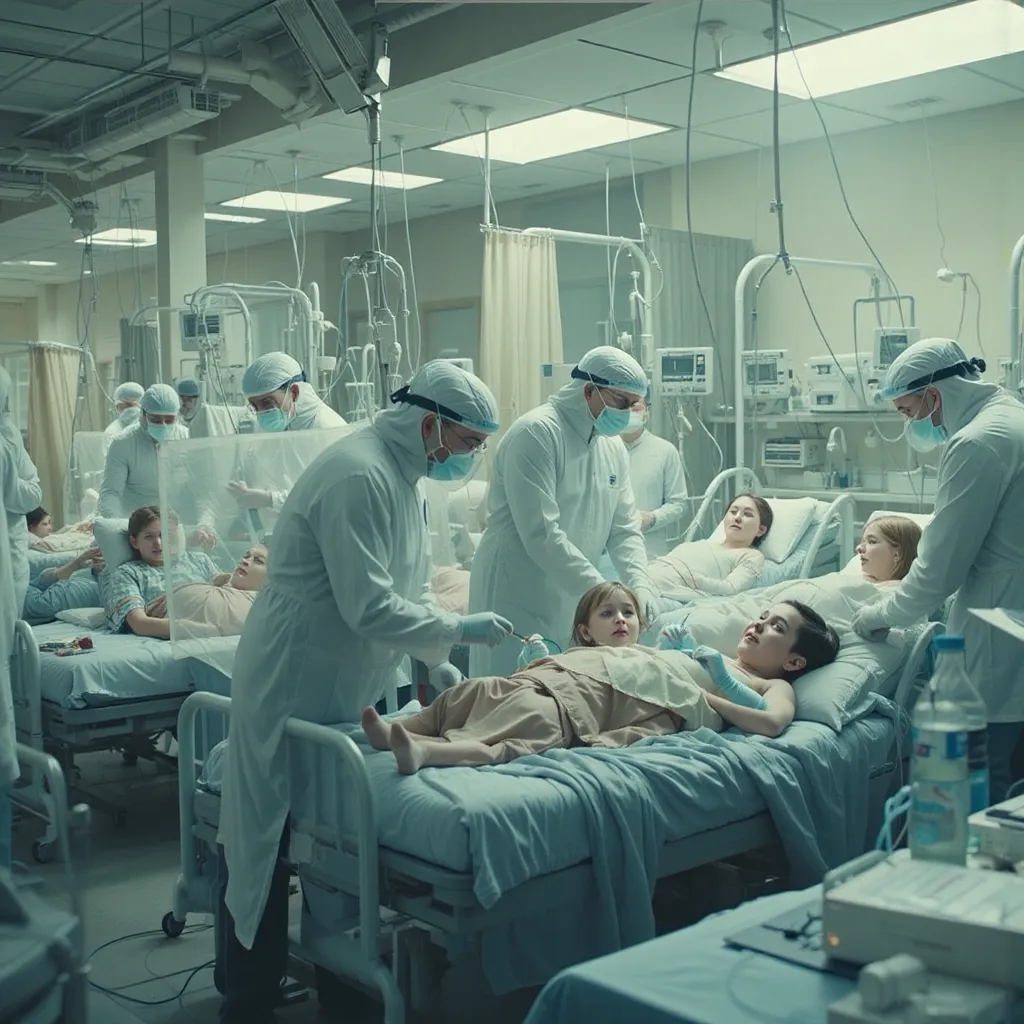
How will the CDC contain the outbreak?
The CDC swung into action, implementing a multi-pronged strategy to contain the escalating bird flu outbreak. First, they focused on aggressive contact tracing, interviewing Lily and the other infected children to identify everyone they had been in contact with. These individuals were then quarantined and monitored for symptoms.
Next, a mass vaccination campaign was launched in Pleasantville and the surrounding areas. Doses of the antiviral medication Tamiflu were distributed to the general population, prioritizing those at highest risk, such as children, the elderly, and individuals with underlying health conditions. Public service announcements were broadcast on local television and radio stations, urging residents to practice good hygiene, avoid close contact with others, and seek medical attention if they developed flu-like symptoms.
Finally, the CDC worked closely with local health officials to ensure that hospitals had the resources they needed to cope with the surge in patients. Additional ventilators and medical personnel were brought in from other parts of the state. The situation was dire, but the CDC was determined to contain the outbreak before it spread further.
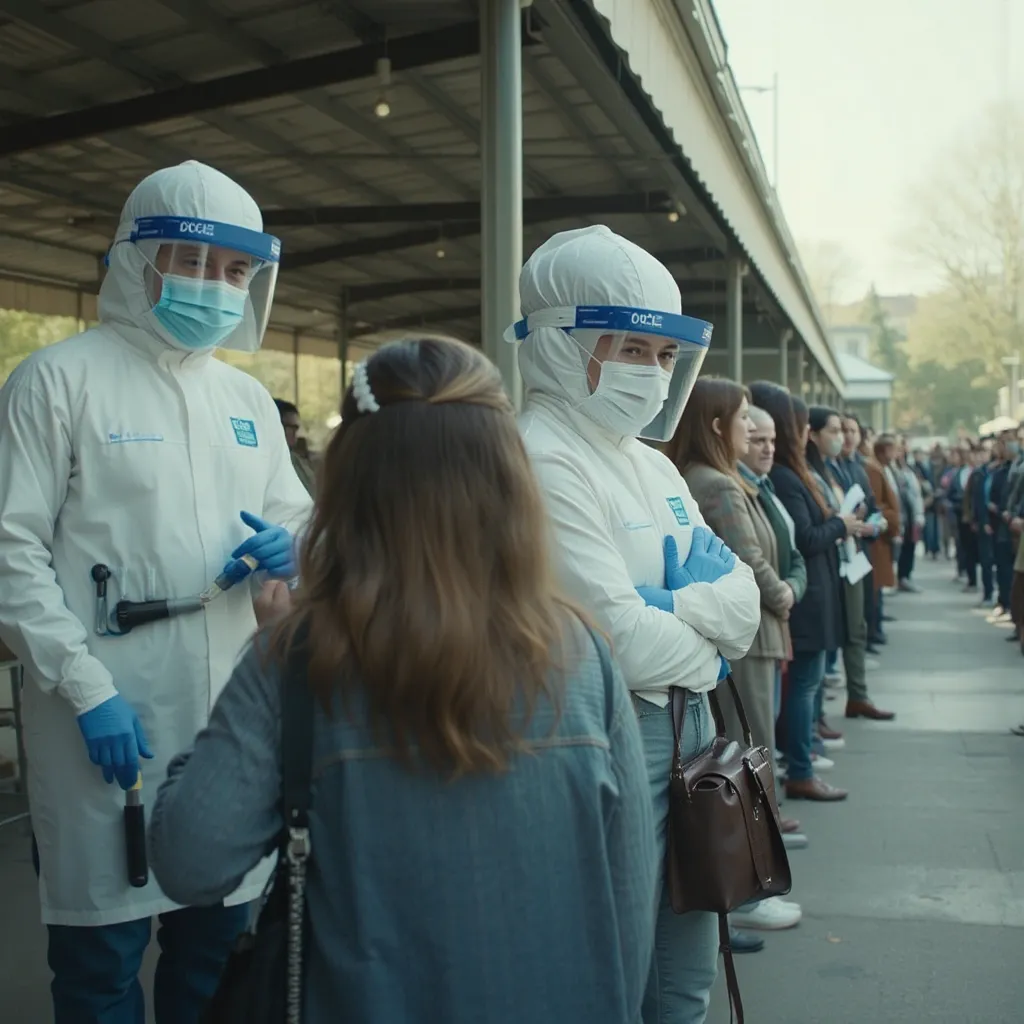
Lily, who’s sweater was taken off and was asleep in her white t-shirt and skirt began to improve
After a harrowing few days in the ICU, Lily finally began to show signs of improvement. The antiviral medications were working, and her fever started to break. She remained asleep, her small frame resting peacefully in the hospital bed, now clad in just her white t-shirt and pink and white plaid skirt. The doctors and nurses continued to monitor her closely, cautiously optimistic but aware that the bird flu could still take a turn for the worse. The news of Lily’s progress offered a glimmer of hope amidst the ongoing crisis, a reminder that even in the face of a deadly virus, the human spirit could still triumph.
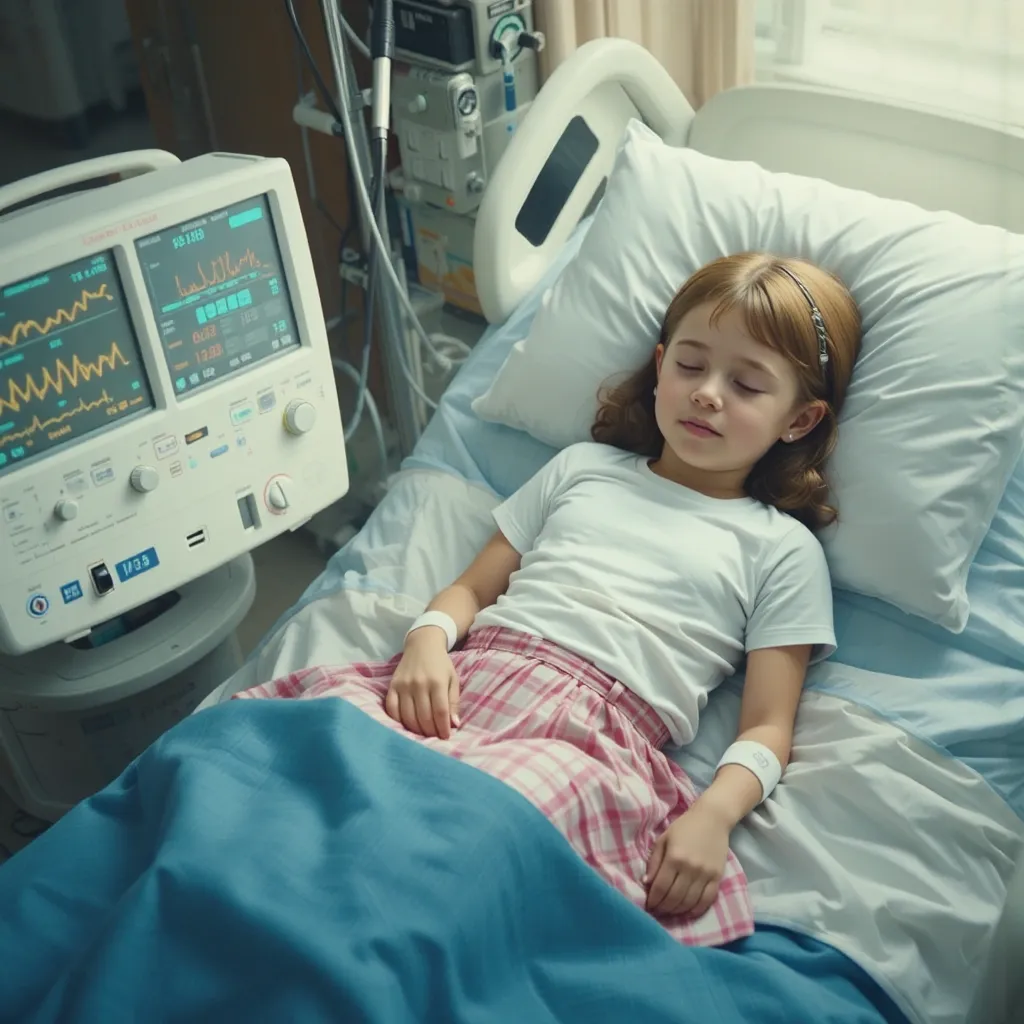
Soon a 8 year old black boy crashed in the Ambluance from the flu, they cut his YMCA t-shirt up and shock him, once they arrive, after 10 mins-they call it
The relative calm in the ICU was shattered as another ambulance arrived, its siren wailing. Paramedics rushed in, carrying an 8-year-old Black boy, his body limp. They quickly transferred him to a hospital bed, his blue YMCA t-shirt already cut open to allow for chest compressions. The medical team swarmed around him, their faces grim. They worked frantically, administering medication and attempting to shock his heart back into rhythm. But after ten agonizing minutes, the lead doctor shook his head. “Time of death,” he announced somberly. The room fell silent, the weight of the loss heavy in the air. The boy’s name was Michael, another victim of the relentless bird flu. The crisis was far from over, and the stakes were higher than ever.
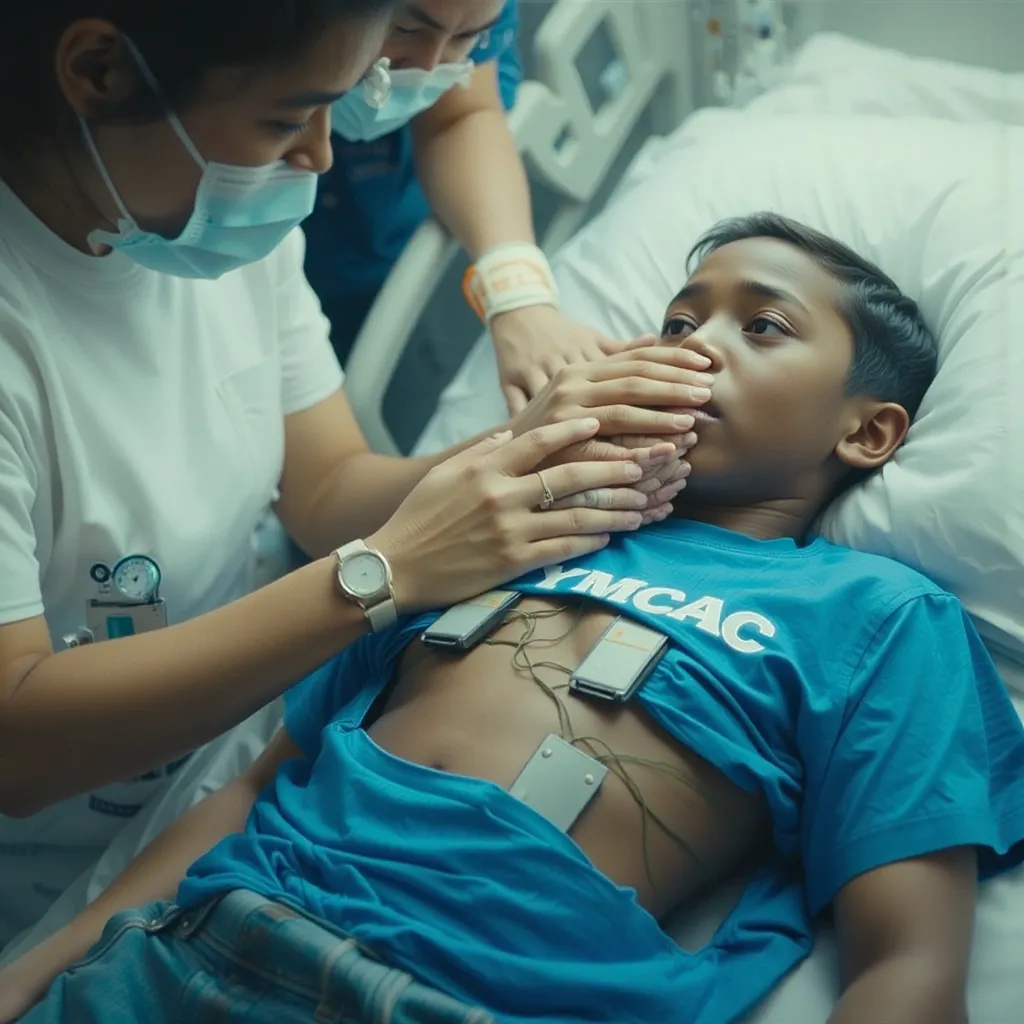
At the school, a 7 year old black girl in a black sweater and black and white skirt began to throw up blood on the floor as the CDC arrived, medics came in and cut her clothes up, they soon shock her but call it 5 mins later
The scene at Leeds Ave Elementary was already chaotic, but it descended further into despair as a 7-year-old Black girl suddenly collapsed. She was wearing a black sweater and a black and white skirt when she began vomiting blood onto the floor. The CDC personnel, still processing the gravity of the situation, immediately called for medics. The paramedics arrived swiftly, their faces grim as they assessed the girl’s condition. They quickly cut away her clothes to gain access for resuscitation efforts, but it was clear that she was in critical condition. Despite their best efforts, after only five minutes of frantic attempts to revive her, they were forced to call it. The young girl’s death cast a pall of grief and fear over the school, a stark reminder of the virus’s deadly power.
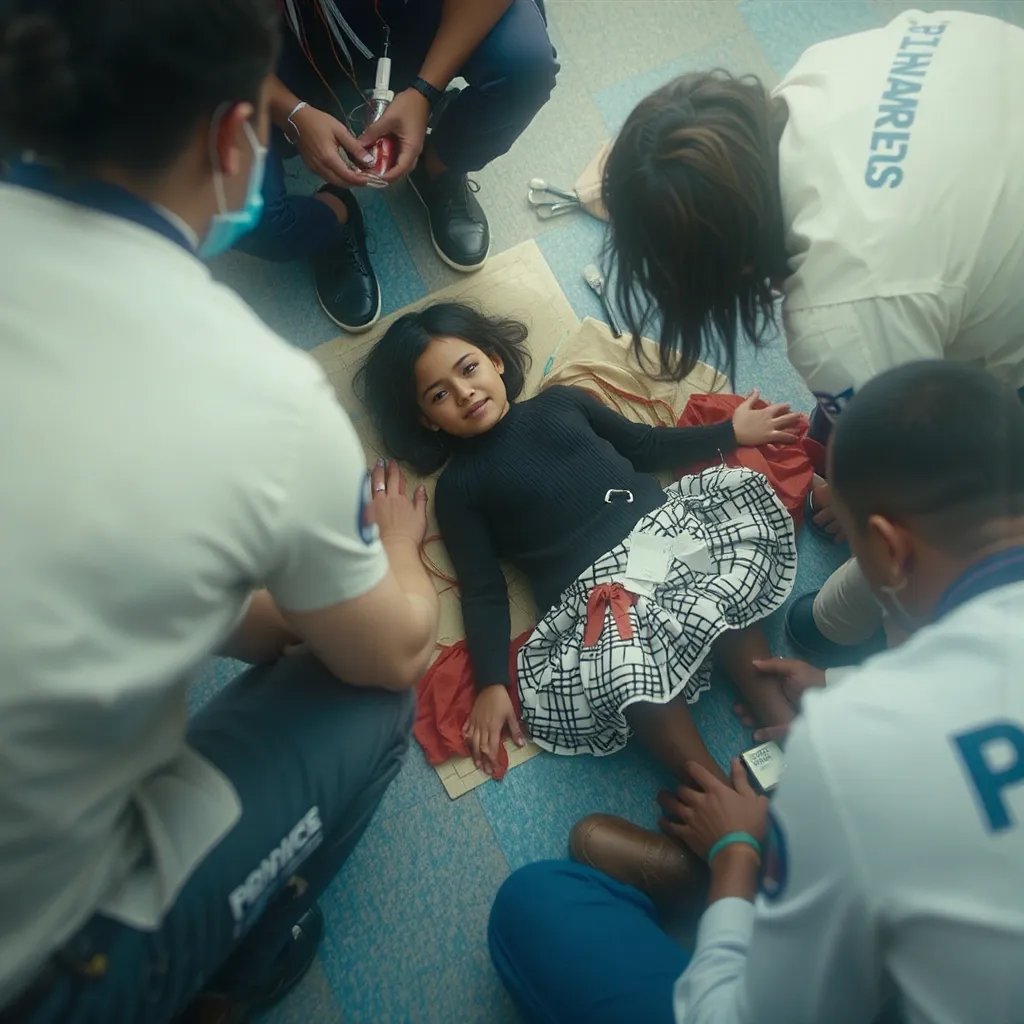
How are the other children in the ICU?
The ICU remained a battleground, a place of both hope and despair. While Lily continued to show slow but steady improvement, the other children were fighting for their lives. Some responded well to the antiviral treatment and respiratory support, their fevers gradually subsiding and their breathing becoming easier. But others struggled, their bodies weakened by the virus, their conditions fluctuating wildly. The medical staff worked tirelessly, constantly adjusting treatment plans and providing unwavering care. Each small victory was celebrated, each setback met with renewed determination. The fate of these young patients hung in the balance, a testament to the unpredictable and devastating nature of the bird flu.
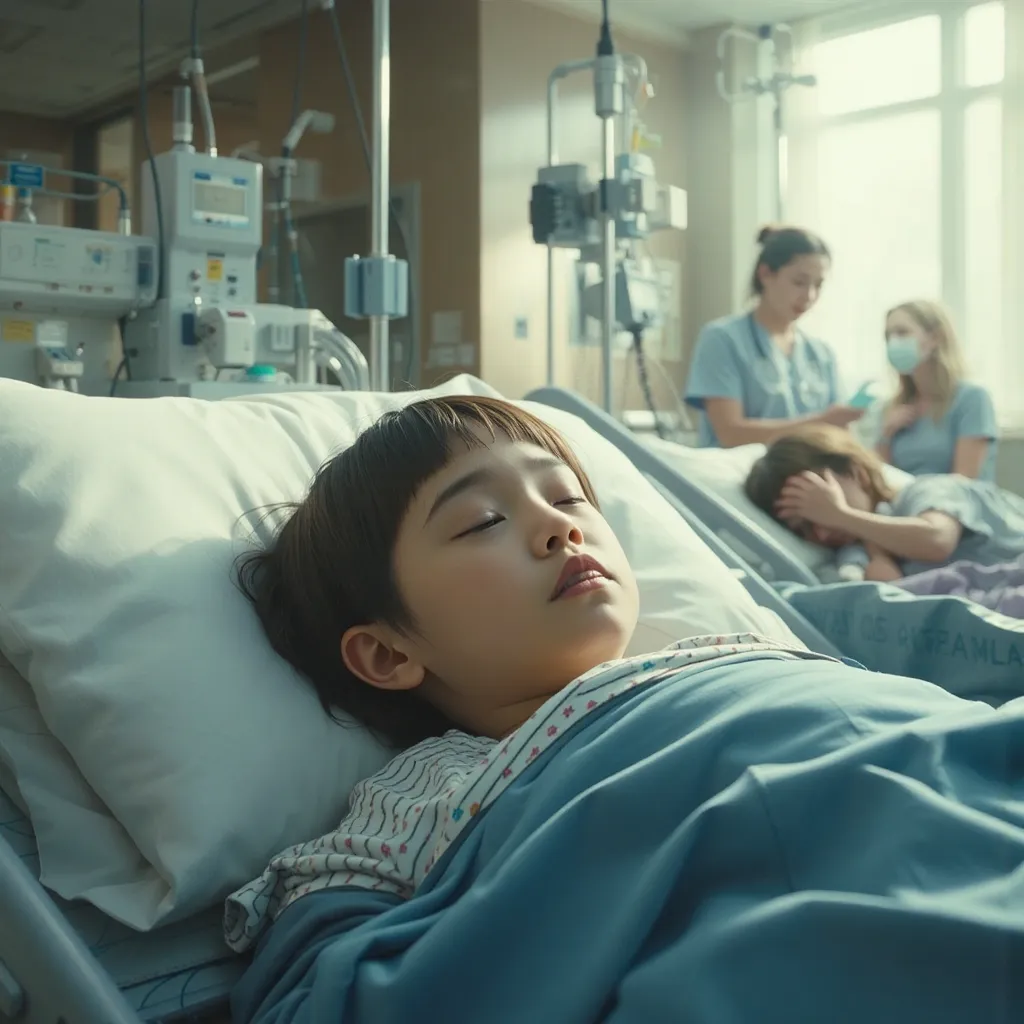
3 days later, Lily awakens and is near fully covered
Three days later, a soft groan broke the silence in Lily’s corner of the ICU. Her eyes fluttered open, adjusting to the bright lights. She was weak, disoriented, and her body ached, but she was awake. She looked around, taking in the sterile environment of the ICU, the beeping machines, and the nurses bustling about. She noticed she was almost fully covered, a testament to the efforts to keep her body warm and fight off the infection. A nurse noticed her stirring and rushed to her side, a relieved smile on her face. “Lily, you’re awake! How are you feeling?” she asked gently. Lily managed a weak smile in return. The long, arduous journey back to health had begun.

How does the community of Pleasantville recover from the outbreak?
The bird flu outbreak left an indelible scar on the community of Pleasantville. The loss of life, especially the children, cast a long shadow of grief and fear. However, amidst the tragedy, a spirit of resilience and unity emerged.
The CDC remained in Pleasantville for weeks, working with local health officials to ensure the virus was completely eradicated. Schools were thoroughly sanitized, and a comprehensive public health education campaign was launched to promote preventative measures and address lingering anxieties.
The community rallied together to support the families who had lost loved ones, organizing fundraisers, providing counseling services, and offering practical assistance. Support groups were formed, providing a safe space for residents to share their experiences and heal together.
Slowly but surely, life began to return to normal in Pleasantville. Children returned to school, businesses reopened, and the community started to rebuild. The memory of the outbreak would forever be etched in their minds, but it also served as a reminder of their strength, their compassion, and their ability to overcome even the most devastating challenges. The town implemented new health protocols and emergency response plans, determined to be better prepared for any future crisis.

Did Lily fully recover and return to a normal life?
Lily’s recovery was a long and arduous process, but with the support of her family, friends, and medical team, she eventually regained her strength and returned home. The bird flu had taken a toll on her body, leaving her with lingering fatigue and some respiratory issues, but she was determined to live a full and normal life.
She returned to school, where she was welcomed back with open arms by her classmates and teachers. She gradually caught up on her studies and resumed her favorite activities, like playing soccer and drawing. The experience had changed her, making her more appreciative of life and more determined to make a difference in the world.
Years later, Lily went on to study medicine, inspired by the doctors and nurses who had saved her life. She dedicated her career to helping others, particularly children, and became a passionate advocate for public health and infectious disease prevention. While the memory of the bird flu outbreak remained a part of her story, it also served as a source of strength and motivation, reminding her of the importance of compassion, resilience, and the power of the human spirit.

